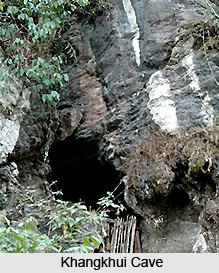
History of Manipur is largely dominated by the rule of King Pakhangba who united the seven clans of Manipuri society into one unit. As the region was largely influenced by Vaishnavism, this brought remarkable changes in the traditions of the land.
The history of Manipur which is recorded in the Cheitharon Kumpapa mentions that the region of Manipur mainly consists of the Meitis and Meitei - pangals in the valley region while the hilly regions are populated by the Nagas and the Kuki tribes. The region came under the British rule in 1891 and continued as a princely state till it joined the Union of India in 1956.The small kingdom of Manipur had been the bed of number of battles which mainly include the Indo Burmese war and the battles of Second World War. Manipur captured a significant position during the Second World War when the Japanese were defeated in the battle and pushed back before they could reach the Capital of Imphal. Since Independence in 1947 when India gained freedom, the state of Manipur established a democratic government of its own under king Prabodhchandra which soon got dissolved. Since then the state remained a union territory from 1956 till 1972 when finally it joined the Union of India and turned to be a full fledged state under Union of India.
Pre historic period of Manipur
History of Manipur enlists a number of names which had been given to the region from time to time. While in the pre historic days it was described as Meitrabak or Kangleipak or Meiteileipak; it included 20 more names which has came in the course of history. In the later parts of history the region received different names from its neighbouring states as the Burmese called it Kathe, Assamese called it Meklee, etc. The prehistoric Manipur include a territory which stretches between the branches of eastern Himalayas and goes down to the south and looks like a compact physiographic unit that divides between the Brahmaputra and the Chindwin valley. As the region of Manipur is largely populated in the hilly regions and the valley, it bears the traditions of Bronze Age which is visible in the cultural trends of the people and the region. The remnants of Old Stone Age are largely visible in the Khangkhui caves of Manipur and Machi which is the pebble chopper tool of Stone Age. Khangkhui caves are the four caves which are located near Khangklhui at a distance of eleven kilometres south east of Urkhul bordering upper Burma. This is an archaeological site which is dated back upto 3000 BC. This region includes a number of other caves like the Hundin caves, Purul cave and the Song Ring rock shelter. The prominence of this period was further marked by Machi - a tool which was used by the Maring tribe that existed in Manipur during the paliolithic age.
 Neolithic age of Manipur
Neolithic age of Manipur
History of Manipur also marks the period of Neolithic age with the caves which exist even today. Tharon caves distinctively mark the presence of that age in the region. The Neolithic age in Manipur can be traced back till 2000BC.The region of Manipur was ruled by Kanga who is regarded as the first ruler of Manipur as included in the chronicles of royal events. This was followed by MaliyaPhambalcha who ruled somewhere around 1379 BC.
Ancient history of Manipur
History of Manipur in the Ancient period is marked by the rule of number of dynasties. Among them the prominent were NongdaLairenPakhangba (33-154 AD), KhuiyoiTompok and Loiyamba (1074-1122 AD), the great law Giver. These rulers are largely known for laying down the foundation of the traditions in the land of Manipur. Manipur in the mediaeval period has been mainly marked by the rule of MeidinguNingthouKhomba (1432-1467), conqueror of Tamu; MeidinguKiyamba (1467-1508 AD), the Conqueror of Kabaw Valley; MeidinguKhagemba (1597-1652), the conqueror of Chinese and MeidinguCharairongba (1697-1709). Manipur after the rule of these rulers saw the advent of vashnavism which began a new era in the land. During Vaishanavism, Manipur was largely ruled by MeidinguPamheiba (Garibnawaz) (1709-1748); MeidinguChingthangkhomba or Bhagyachandra (1749-1798).
Period under the British Rule
A major change was witnessed with the advent of Anglo Burmese culture. The then Burma was the first who invaded the land of Manipur and ruled over the area till it came under the British rule. Manipur under the British rule was mainly known as the princely state which was ruled by MeidingnguSurchandra (1886-90) followed by MeidingnguChurachand Singh (1891-1941), who continued till it was ruled with a puppet government for a short period of time which got dissolved over a controversy. Since then Manipur joined Indian union as a union territory when finally it was included as a full-fledged state in 1972.
Thus history of Manipur has a chronological background which traces its origin from the Stone Age till the present. As a land of culture and traditions this colourful region of India is marked with a number of cultural trends which describe the tradition of the land.



















